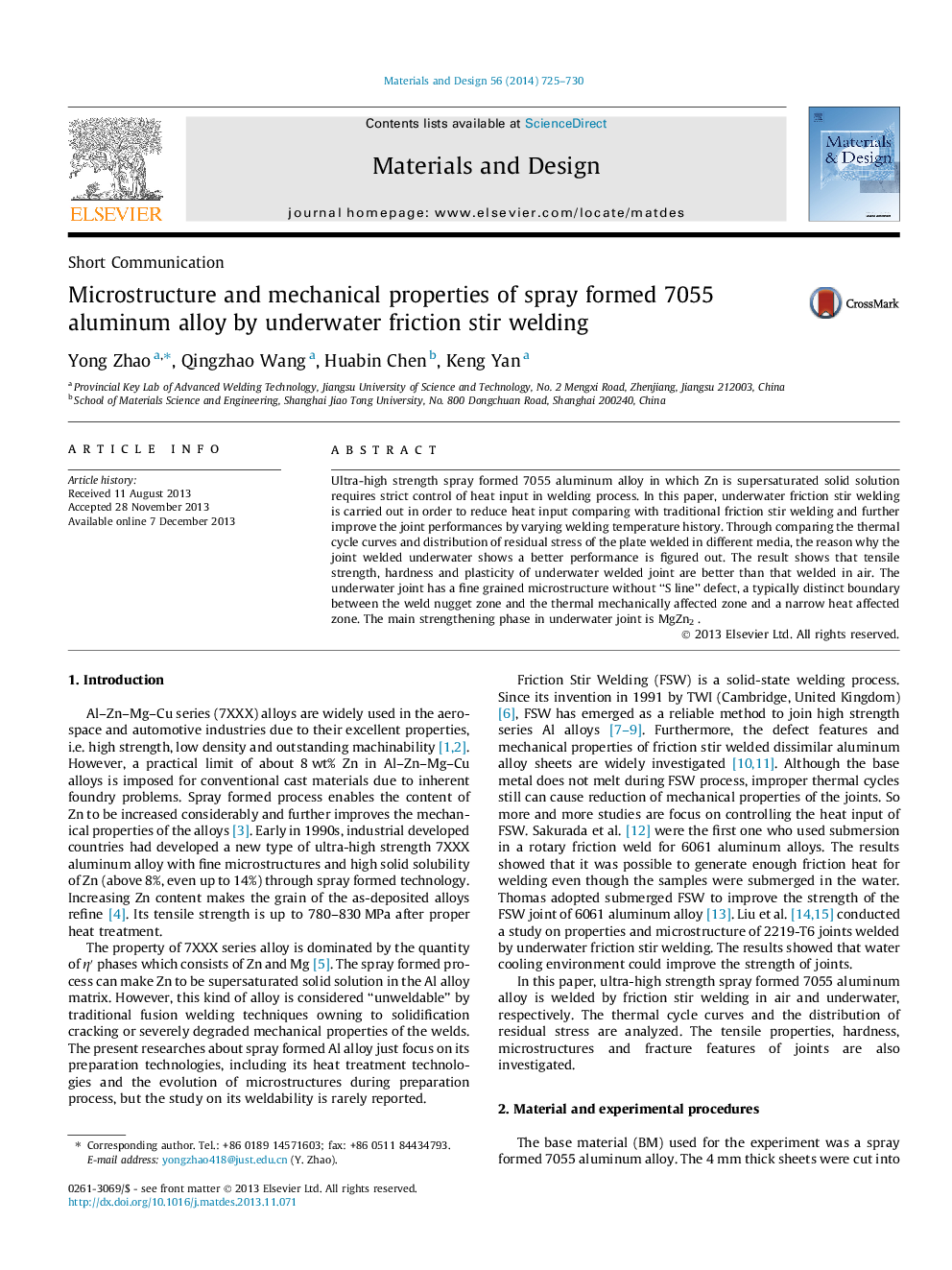| Article ID | Journal | Published Year | Pages | File Type |
|---|---|---|---|---|
| 829495 | Materials & Design (1980-2015) | 2014 | 6 Pages |
•Thermal cycles in different welding conditions were compared and studied.•Residual stress distributions of different joints were studied.•Underwater FSW was conducted to improve properties of joint with lower heat input.•Underwater FSW has eliminated the “S line” defect which increases performance of joint.•The strengthening phases and strengthening mechanisms of different joints were investigated.
Ultra-high strength spray formed 7055 aluminum alloy in which Zn is supersaturated solid solution requires strict control of heat input in welding process. In this paper, underwater friction stir welding is carried out in order to reduce heat input comparing with traditional friction stir welding and further improve the joint performances by varying welding temperature history. Through comparing the thermal cycle curves and distribution of residual stress of the plate welded in different media, the reason why the joint welded underwater shows a better performance is figured out. The result shows that tensile strength, hardness and plasticity of underwater welded joint are better than that welded in air. The underwater joint has a fine grained microstructure without “S line” defect, a typically distinct boundary between the weld nugget zone and the thermal mechanically affected zone and a narrow heat affected zone. The main strengthening phase in underwater joint is MgZn2 .
